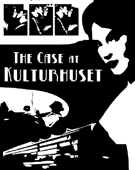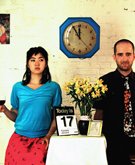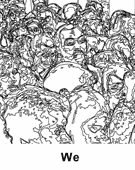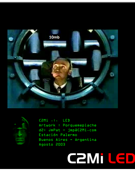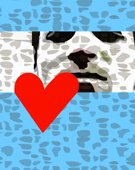The Case at Kulturhuset was created for Kulturhuset, located in central Stockholm, Sweden. The exhibition was held from 2004 April 14 to May 9, during which it received 300 visitors. Our interest was to identify the human weakness for exaggerating and embellishing the truth; lying not only to those around us but more critically, lying to ourselves. The objective truth is ultimately impossible for us to know, but as this project demonstrates, that does not stop us from trying.
A participant in The Case was presented with a murder and a number of witnesses willing to tell their version of the events leading up to the murder; Jack, Loretta, Magnus, the Bartender, and Anna, existed in a mixed-reality world, where they lived virtually in the real physical space. The participant was placed into the role of the private eye and given the opportunity to question the witnesses and receive their ...
Full Description
The Case at Kulturhuset was created for Kulturhuset, located in central Stockholm, Sweden. The exhibition was held from 2004 April 14 to May 9, during which it received 300 visitors. Our interest was to identify the human weakness for exaggerating and embellishing the truth; lying not only to those around us but more critically, lying to ourselves. The objective truth is ultimately impossible for us to know, but as this project demonstrates, that does not stop us from trying.
A participant in The Case was presented with a murder and a number of witnesses willing to tell their version of the events leading up to the murder; Jack, Loretta, Magnus, the Bartender, and Anna, existed in a mixed-reality world, where they lived virtually in the real physical space. The participant was placed into the role of the private eye and given the opportunity to question the witnesses and receive their firsthand accounts of events. The investigation was conducted through handheld computers (iPAQs) and as the viewer moved through the physical location, Bluetooth transmitters hidden throughout the location triggered virtual encounters with both witnesses and objects in a film-noir and graphic-novel inspired animation, with audio in English with Swedish subtitles. The internal logic of the system was created and tracked on a custom, flash-based client application.
The conceptual foundation of the project and the basis of its plots comes from the classic Akira Kurosawa film Rashomon. In Rashomon, as the witnesses relate their stories, each significantly different from the others, the viewer is placed into the role of the judge. Kurosawa accomplishes this by skillfully positioning his technology, the camera, so that the character faces outward, appearing to directly address the viewers' implicit questions. Beyond being cinematically inventive, the technique emphasizes the status of the viewer and implies subtly, the required interaction of the viewer. Likewise, as the participant explores the physical space of The Case, he encounters the various witnesses in a simulation of first-person perspective real-life encounters. The witnesses speak as if spoken too, they answer the participant's implied questions, and they remember what they have said and keep track of their lies. The innovation of The Case is to increase the immersion and variability beyond what is possible on film, to make the explicit the participants' interaction as they choose how to deal with witnesses, questioning and re-questioning them, and to uncover content at significant locations in the physical environment revealed by the narrative (such as climbing the staircase to retrace Loretta's steps, and discovering a (virtual) lost scarf).
The first-person perspective does not simply provide the basis for the model of interaction but also serves as a conduit for the theme of subjectivity in the piece. Upon concluding the questioning part of the installation, the participant is asked to articulate his personal version of the events in an online judgement scenario. It is in this act of choosing a killer and typing an explanation at the internet kiosk that the participant is explicitly engaging in the main conflict of The Case and facing the same problem that all of his witnesses have faced: the participant is driven to resolution but is unable to achieve it on any kind of objective basis, the only recourse to to supply his own subjective biases. Presenting all the responses entered at the kiosk together on the project's final website reveals the significant discrepancies between participants' versions. In this sense, the examination of subjectivity in The Case questions the participants' own perspectives, prejudices, and preconceptions, while simultaneously affirming their validity.
Work metadata
- Year Created: 2004
- Submitted to ArtBase: Sunday Nov 19th, 2006
- Original Url: http://knifeandfork.org/case
- Permalink: http://brianhouse.net/?project=case
-
Work Credits:
- Knifeandfork, creator
Take full advantage of the ArtBase by Becoming a Member
